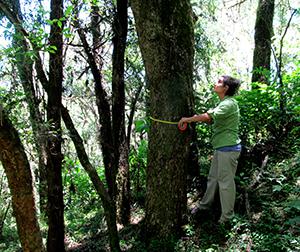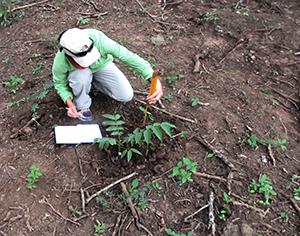Flavia Mazzini
This study will quantify cattle impacts on the structure, composition and dynamics of tree species in the Argentinean Yungas.

Exotic livestock grazing and browsing affect directly and/or indirectly the mountain forest around the world. Yungas, in particular, has a centuries-long cattle grazing history in a unique forest with structural complexity appropriate for studying forest-livestock interactions. Cattle production provides the primary source of subsistence for many rural people but cattle production is a main factor in forest degradation and biodiversity impoverishment.

The greatest academic interest lies in understanding the role of ungulates as drivers of forest communities and ecosystems. The conservation and/or management interests are in preserving forest conservation areas with associated biodiversity and to protect commercial plantations timberland. Lack of studies causes us to rely only in observational information to evaluate impacts.
It was reported structural and compositional changes in an old-growth subtropical forest and assessed the functional nature of those changes to test hypothetical drivers. That study correlated the pattern found with the exclusion of livestock over 20 years. Therefore, it is crucial to go beyond correlational results and begin studies that quantify the magnitude and direction of the impact of livestock in subtropical montane forests. I propose to start to investigate: the pattern of grazing, cattle selectivity on tree species, the effect of different relative abundances of domestic cattle on the understory and determine the importance of the plant traits (leaf toughness and spinescence) and functional (foliar phenology) as explanatory factors affecting browsing and forage selection pattern.
Due to the importance of the Yungas in biodiversity and providing wood and ecosystem services, Yungas management and conservation is high priority at a national (Argentine) level. We consider it crucial to initiate studies to quantify the damage of livestock on the structure, composition and dynamics of Yungas. Then, with robust scientific evidence it will be possible to apply measures in order to minimize anthropogenic impacts caused by livestock on forest regeneration.